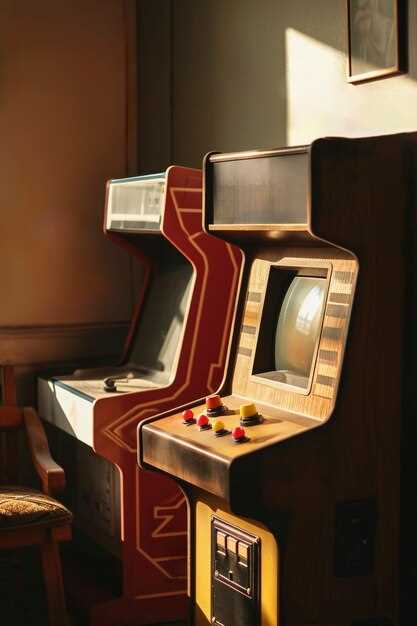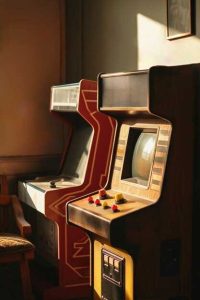Explore the fascinating roots of retro arcade gaming on mobile devices, where nostalgia meets modern technology. The excitement of classic games like “Pac-Man” and “Space Invaders” has thrived on smartphones, breathing new life into these beloved titles. Understanding how this transition occurred enriches the appreciation for both the past and present of gaming.
Arcade gaming emerged in the late 1970s, captivating players with engaging pixelated graphics and simple yet compelling gameplay. The introduction of mobile devices in the 21st century created a unique opportunity to revive these classic experiences. Companies began porting iconic arcade games to smartphones, making them accessible anytime, anywhere.
Examine how touchscreens transformed gameplay mechanics. The intuitive controls of mobile devices allowed for innovative adaptations of original formats. Whether through swiping or tapping, these devices provided an engaging way to relive retro experiences, ensuring that the essence of arcade classics remained intact.
Recognize the influence of emerging technologies, such as app stores and cloud gaming, which facilitated easy distribution and discovery of classic titles. These platforms democratized access, allowing indie developers to create new versions or inspired games that pay homage to arcade history. As mobile devices continue to evolve, their role in preserving and celebrating retro gaming will only grow stronger.
Tracing the Birth of Arcade Gaming in the 1970s
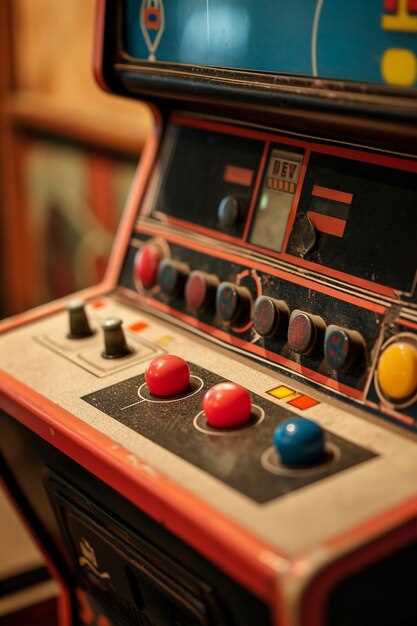
Arcade gaming took its first significant steps in the 1970s, with pioneering titles laying the foundation for an entire industry. The debut of “Computer Space” by Nolan Bushnell and Ted Dabney in 1971 marked a pivotal moment. This game, based on the simple concept of space combat, captivated players and challenged norms of traditional entertainment.
The Emergence of Iconic Titles
In 1972, Atari released “Pong,” a simplistic yet addictive table tennis simulation. Its immediate success spurred arcade operators to recognize potential profits, leading to a surge in arcade venues across the U.S. The atmosphere around these gaming spots transformed, attracting crowds eager for competition and entertainment.
Technological Innovations
Advancements in technology enhanced gameplay experiences during this era. The introduction of microprocessors allowed for more complex graphics and sound effects, enriching player engagement. Games like “Space Invaders” in 1978 further pushed boundaries, introducing high scores and encouraging competition among players. This era solidified the arcade as a social hub, where camaraderie and rivalry flourished, setting the stage for future developments in gaming.
Key Innovations in Arcade Hardware that Shaped Gaming
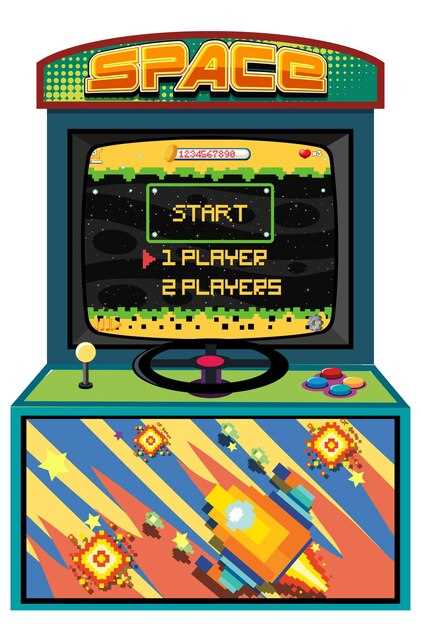
Arcade gaming evolved through several pivotal hardware innovations that defined its popularity. Here are the standout advancements:
Microprocessors
The introduction of microprocessors allowed for more complex game mechanics and graphics, enabling developers to create immersive gameplay experiences. For example, the 8-bit Zilog Z80 and later the 16-bit Motorola 68000 powered games like “Pac-Man” and “Street Fighter II.” These processors made real-time calculations and sprite rendering possible, laying the foundation for modern gaming.
High-Resolution Displays
High-resolution screens transformed visual presentation in arcades. Classic titles transitioned from low-resolution graphics to detailed, colorful sprites, enhancing player engagement. Games like “Defender” and “Asteroids” showcased the potential of vector graphics, offering sharp visuals that captivated audiences.
Input Devices
- Joysticks: Precise control became possible with innovative joystick designs, allowing players to navigate their characters smoothly. The unique feel and response rate contributed significantly to the gaming experience.
- Trackballs: Introduced in games like “Centipede,” trackballs provided an alternative input method that appealed to a broader audience, further enhancing gameplay diversity.
- Light Guns: Games such as “Duck Hunt” popularized light guns and introduced dynamic shooting mechanics, attracting players with interactive environments and challenges.
Game Cabinets
The design of arcade cabinets also played a critical role. Cabins with unique designs, cabinet shapes, and artwork appealed to customer’s aesthetics. The stand-up and cocktail cabinet forms influenced social interactions among players. This imaginative approach brought players physically closer to the experience, promoting higher attendance in arcades.
Networking and Multiplayer Capabilities
Arcade games incorporated networking abilities, enabling competitions and leaderboards. Games like “Tekken” and “Mortal Kombat” showcased multiplayer formats that not only encouraged social interaction but also constructed community experiences around arcade gaming, fostering friendly rivalries.
Each innovation propelled arcade gaming to new heights, attracting diverse audiences and establishing a cultural phenomenon that paved the way for mobile gaming today. The legacy of these hardware advancements continues to influence how games are developed and played across platforms.
The Rise and Fall of Physical Arcades in the 1980s

Arcades flourished in the 1980s, transforming local entertainment. Cities buzzed with life as players flocked to these venues, fueled by the excitement of titles like “Pac-Man,” “Donkey Kong,” and “Space Invaders.” The social atmosphere encouraged face-to-face competition, creating a sense of community among gamers eager to beat high scores.
The arcade experience appealed to a broad audience, drawing both children and adults. Operators strategically placed games near entrances to capture attention, often offering tokens as an affordable way for patrons to enjoy multiple games. This accessibility and variety made arcades a go-to choice for fun.
As technology advanced, the introduction of home consoles allowed gamers to enjoy titles directly at home. Systems like the Atari 2600 and NES offered convenience and comfort, pulling players away from arcades. While home gaming gained popularity, many arcade owners struggled to keep up with the competition.
Economic shifts compounded the challenges facing arcades. Increasing rent prices and changing consumer habits led many locations to close. Some arcades tried to adapt by introducing new games or incorporating food and drink, but many could not survive. Investment in sprawling gaming lounges replaced traditional arcade venues, altering the gaming culture significantly.
By the late 1980s, the arcade scene experienced a decline. While new titles continued to emerge, the golden age of physical arcades was coming to an end. Nostalgia for this era now inspires contemporary events like retro gaming tournaments, celebrating the community spirit and camaraderie that defined these spaces.
Impact of Home Consoles on the Arcade Gaming Landscape
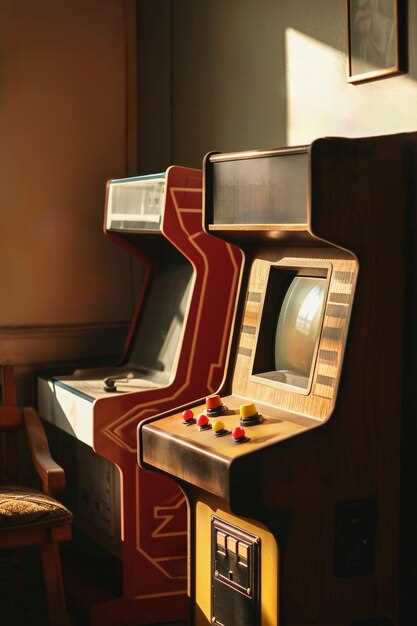
Home consoles significantly transformed the arcade gaming scene. They brought the arcade experience into living rooms, offering players the ability to enjoy popular titles without the need to visit arcades. This convenience led to a decline in foot traffic at physical arcade locations.
Shifting Player Preferences
As home consoles like the NES and Sega Genesis gained popularity in the late 80s and early 90s, consumers began to favor the comfort of gaming at home. Titles that were once exclusive to arcades, such as “Street Fighter II” and “Mortal Kombat,” found their way to consoles. This shift influenced game developers to create versions tailored for home systems, broadening their audience.
Innovation and Game Development
The competitive nature of home consoles spurred innovation. Developers aimed to replicate and enhance arcade gameplay experiences with improved graphics and sound. They integrated single-player modes and storylines that weren’t common in arcades, attracting players who sought depth in gaming. This expansion of gameplay styles pushed arcades to adapt and focus on multiplayer experiences or unique interactions not easily replicated at home.
Transitioning Arcade Classics to Mobile Platforms
Start with a careful approach to controls. Touchscreens differ from traditional arcade buttons, so consider implementing customizable on-screen controls. This allows players to adjust the layout to their preference, enhancing their gaming experience.
- Prioritize responsive touch feedback to simulate the tactile feel of arcade gameplay.
- Incorporate tilt controls where appropriate, adding an engaging dimension to movement-based games.
- Allow for different control schemes, such as virtual joysticks or gestures, to cater to varying player styles.
Analyze the pacing of classic games. Mobile gaming often favors shorter, more digestible sessions. Use level design to introduce quick play modes or save points that suit short bursts of gameplay while preserving core elements of the original experience.
- Implement timed challenges or daily quests to encourage player return and engagement.
- Consider adding unlockable content or achievements that can be completed in brief sessions.
Graphics play a pivotal role in transitioning classics. While preserving the original aesthetic is important, adapting visuals for modern screens can enhance appeal. Ensure that graphics are optimized for various mobile resolutions without losing the nostalgic factor.
- Utilize vibrant colors and smooth animations to draw in new players while honoring the original style.
- Implement retina and high-definition support for enhanced clarity on newer devices.
Incorporate social elements for community interaction. Features such as leaderboards, achievements, and multiplayer modes can enrich the gaming experience. This builds a community around the game and encourages competition.
- Enable sharing achievements on social media to promote engagement and attract new players.
- Add cooperative or competitive modes for players to enjoy with friends, adding a social aspect to gameplay.
Finally, keep the pricing model in mind. While classic games often had a singular price, mobile platforms benefit from versatile monetization strategies. Consider free-to-play models with optional in-app purchases for cosmetic items, and ensure that advertisements do not disrupt the core experience.
- Offer a one-time purchase option for players who prefer an ad-free experience.
- Provide periodic updates with new content to maintain interest and encourage continued play.
Translating arcade classics to mobile platforms requires a mix of careful adaptation, player-centered design, and community engagement. By focusing on key areas such as controls, pacing, graphics, social features, and pricing, developers can breathe new life into beloved titles while appealing to a modern audience.
Notable Mobile Games Inspired by Retro Arcade Titles
Many mobile games successfully capture the essence of retro arcade classics, offering engaging gameplay and nostalgic elements. Here are some must-try titles that nod to the arcade heritage:
| Game Title | Inspiration | Key Features |
|---|---|---|
| Pac-Man 256 | Pac-Man | Endless maze, power-ups, and cooperative multiplayer mode. |
| Crossy Road | Frogger | Endless hopping gameplay, retro graphics, and multiplayer battles. |
| Galaga Wars | Galaga | Intense space shooting, upgraded ships, and co-op play options. |
| Retro City Rampage DX | Grand Theft Auto (original) | Open-world experience, 8-bit graphics, and humorous missions. |
| Dragon’s Lair | Dragon’s Lair | Interactive animated story, quick-time events, and nostalgic visuals. |
| DoDonPachi Blissful Death | DoDonPachi | Bullet-hell shooting, retro visuals, and leaderboards for competitive play. |
Each of these games not only pays homage to their predecessors but also innovates gameplay mechanics, making them enjoyable for both new players and those who grew up in the arcade era. Download them today for a blast from the past right on your mobile device!
Technology Evolution: From Floppy Disks to App Stores
Transitioning from floppy disks to app stores illustrates the remarkable changes in how we distribute and access games. Floppy disks emerged in the late 1970s, holding a mere 1.44 MB of data. Despite their limited capacity, they served as a primary method for sharing software, including early arcade games.
The Rise of CDs and Digital Downloads
The 1990s introduced CDs, which expanded storage capabilities to 650 MB, significantly enhancing the gaming experience. This shift allowed developers to incorporate richer graphics and sound. As internet speeds improved, digital downloads gained popularity. Platforms like Steam revolutionized the way PC games were distributed, bypassing physical media entirely.
The Smart Device Revolution
The launch of the iPhone in 2007 propelled mobile gaming into the mainstream. The App Store, introduced in 2008, offered an unprecedented platform for indie developers alongside major studios. It allowed quick access to a vast library of games, driving innovation in game design. Mobile platforms now provide affordability and accessibility, reaching broader audiences.
Today, app stores are integral to the gaming industry’s ecosystem. They facilitate easy updates, community engagement, and monetization options like in-app purchases, shaping how games are created and consumed. As technology progresses, expectations regarding user experience and gameplay continue to rise, laying the groundwork for the future of mobile gaming.
Reviving Nostalgia: The Role of Emulators in Mobile Gaming
Emulators allow gamers to relive classic arcade experiences on mobile devices. They mimic the hardware of old gaming consoles, providing access to beloved titles from the past. Popular emulators like RetroArch and PPSSPP have gained traction for their user-friendly interfaces. These applications enable seamless gameplay and offer features like save states and custom controls, enhancing the retro gaming experience.
Accessibility of Classic Games
Many retro games are no longer available on modern platforms. Emulators bridge this gap, giving users a chance to experience titles that shaped gaming history. From platformers to fighting games, emulators support a wide range of formats, allowing enthusiasts to download ROMs and dive into the nostalgia of games like “Super Mario Bros.” and “Street Fighter II.” Researching compatible ROMs is crucial for ensuring optimal performance and gameplay experience.
Community and Support
The emulator community thrives on forums and social media, offering support and sharing tips for optimal settings. Engaging with fellow gamers enhances the enjoyment and provides solutions to common issues like lag or graphical glitches. This collaborative spirit contributes to the sustained popularity of retro gaming on mobile devices, allowing nostalgia to flourish as new generations discover classic titles.
Exploring the Community and Culture around Retro Gaming
Join retro gaming forums and communities like Reddit’s r/retrobattles and the AtariAge forums. Here, members share tips, tricks, and game recommendations, fostering a collaborative spirit. Engage in discussions about rare finds and hidden gems to deepen your knowledge.
Attend local and online retro gaming events. Events like the Portland Retro Gaming Expo offer meetups, tournaments, and nostalgic experiences. Connecting with other enthusiasts enhances the gaming experience, building friendships around shared interests.
Participate in social media groups focused on retro games. Platforms like Facebook and Twitter host communities where players post screenshots, achievements, and reviews. Follow hashtags like #RetroGaming to discover trends and new releases in retro-style games on mobile devices.
Collecting vintage consoles and games brings an exciting challenge. Keep an eye on auction sites like eBay or local thrift stores for treasures. Documenting your collection through blogs or vlogs can inspire others and create a sense of accomplishment.
Support indie developers crafting retro-style games for mobile. Explore platforms like Itch.io for unique games that draw inspiration from classics. By championing these creators, you help keep the spirit of retro gaming alive and thriving.
Engage with Twitch and YouTube streams focused on retro gaming. Watching playthroughs and speedruns introduces you to strategies and gameplay nuances. Participating in live chats allows you to connect with streamers and fellow viewers who share your passion.
Explore merchandise related to beloved retro games. From apparel to collectibles, these items help keep nostalgia alive. Sharing your collection on social media can spark conversations and strengthen community ties.
The Future of Retro Arcade Gaming on Mobile Devices
Mobile game developers should focus on enhancing user experience through improved graphics and sound effects that resonate with classic arcade vibes. Adding customizable controls can make gameplay more enjoyable for both new players and nostalgia-driven veterans.
The integration of augmented reality (AR) can elevate retro gaming by blending classic gameplay with real-world settings. Imagine playing a pixelated platformer while seeing your surroundings transformed into a retro universe. This innovative approach attracts new audiences and rekindles interest among long-time fans.
Regular updates can revitalize classic titles, introducing fresh content while respecting original designs. Developers should consider seasonal events or challenges that encourage community engagement. Enhanced leaderboards and multiplayer features can also foster competition and collaboration, keeping players invested.
Cross-platform compatibility allows players to transition seamlessly between devices. By offering synchronization of game progress across mobile and console platforms, developers can cater to players who enjoy retro gaming on various devices. Such integration encourages longer gaming sessions.
Community-driven projects can drive future retro gaming. Open-source initiatives or user-created levels and characters foster creativity and community involvement. These contributions can keep nostalgic titles alive and thriving, enriching the overall gaming ecosystem.
Incorporating blockchain technology could provide a new dimension to retro arcade games. By allowing players to earn and trade unique in-game items, developers can create new revenue streams while enhancing the sense of ownership among gamers.
Ultimately, attracting a mix of new and returning players will require a balance between nostalgia and innovation. By prioritizing quality, engaging gameplay, and community involvement, retro arcade gaming on mobile devices remains poised for a successful and enduring future.
Video:
Virtual Cities Review: A Fun Journey Through 45 Classic Game Cities
Virtual Cities Review: A Fun Journey Through 45 Classic Game Cities by Archades Games 574 views 4 years ago 5 minutes, 56 seconds
Q&A:
What are the key historical developments that led to the rise of retro arcade gaming on mobile devices?
The rise of retro arcade gaming on mobile devices can be traced back to several key developments. Initially, the 1980s witnessed the emergence of iconic arcade games like Pac-Man and Space Invaders, which set the foundation for gaming culture. In the late 1990s and early 2000s, advancements in mobile technology, particularly the introduction of smartphones with improved processing power and graphics capabilities, allowed developers to create more sophisticated games. The introduction of app stores also facilitated easy distribution of games, enabling players to access both new and retro titles on the go. As nostalgia grew among gamers who had experienced these classic games in arcades, developers began to revitalize retro games for mobile platforms, blending them with modern technology while preserving the original charm.
How did the transition from traditional arcade machines to mobile platforms occur?
The transition from traditional arcade machines to mobile platforms involved several factors. Firstly, the decline of physical arcade venues in the 1990s meant that fewer people had access to arcade machines. As home gaming consoles became more popular, gaming shifted to personal devices. The launch of smartphones with touchscreens created a new medium for gameplay, which appealed to a broader audience. Companies began to recognize the potential of reaching nostalgic players through remakes of classic arcade games on mobile devices. This was further propelled by the success of gaming apps that incorporated retro aesthetics and gameplay mechanics, leading to a significant market for retro gaming on mobile platforms.
What impact did mobile arcade games have on the gaming community?
Mobile arcade games had a profound impact on the gaming community by democratizing access to gaming experiences. Players who once felt excluded due to the high costs of arcade machines or console gaming could now enjoy classic titles at little to no cost. This accessibility allowed for a resurgence of interest in retro gaming, fostering a community of fans who shared their love for classic game design and storytelling. Additionally, the convenience of mobile play encouraged developers to innovate, creating new genres and gameplay styles inspired by retro games. This blending of old and new has enriched the gaming community, fostering discussions about game design, nostalgia, and the evolution of gaming technology.
What role did nostalgia play in the popularity of retro games on mobile devices?
Nostalgia played a significant role in the popularity of retro games on mobile devices. Many players who grew up in the arcade heyday developed fond memories associated with games like Donkey Kong and Galaga. As these players matured, they sought out experiences that reminded them of their childhood. Mobile devices offered a convenient platform to relive those experiences without needing to visit an arcade. Developers capitalized on this nostalgia by re-releasing classic games or creating new titles inspired by vintage aesthetics. The blend of familiar gameplay mechanics with modern technology struck a chord with both older gamers and a new generation, contributing to a vibrant market for retro-themed games.
What are some notable examples of retro arcade games available on mobile devices today?
Today, several notable retro arcade games have made their way to mobile devices, capturing the essence of classic gaming. Titles like “Pac-Man 256,” which adds a new twist to the classic Pac-Man gameplay with endless mazes, and “Galaga Wars,” which revitalizes the classic space shooter experience with new graphics and power-ups, are prime examples. “Space Invaders Extreme” combines traditional gameplay with modern visuals and sound effects. Other popular titles include “Sonic the Hedgehog,” which brings the beloved character and his adventures to mobile screens, and “Tetris,” the ageless puzzle game adapted for touchscreen controls. These games not only preserve the original fun but also introduce fresh elements to engage players.
What are the key milestones in the history of retro arcade gaming on mobile devices?
Retro arcade gaming has seen several significant milestones since its inception on mobile platforms. One of the earliest notable events was the release of ‘Pac-Man’ on mobile phones in the early 2000s. This marked a turning point, as it brought classic arcade games to a new audience. In 2006, the App Store launched on iOS, paving the way for various retro games, including ‘Tetris’ and ‘Space Invaders’, to become available for download. Additionally, the rise of Android devices in the late 2000s allowed for a broader range of arcade-style games, with developers creating ports and remakes of classic titles. By the 2010s, various emulator applications emerged, enabling users to play a vast library of retro games on their smartphones, further solidifying the popularity of arcade gaming in mobile formats.
